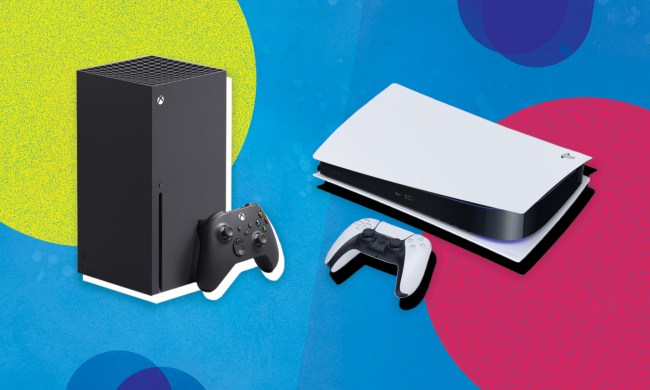
I remember back in 2014 when I was keeping my eye out for any rumor I could find about Persona 5. Having seen the teaser trailers of the game, I was so excited to see it finally release in 2015. That year passed without it launching. When Persona 5 was released in Japan in September 2016, the wait for its April 2017 international release was excruciating. During that time, there was another game that caught my attention: Tokyo Xanadu. Its core gameplay revolved around a slice-of-life school setting and dungeon crawling. Sound familiar?
I was already a big fan of developer Falcom’s games like the Trails and Ys series, so I figured I would play this to hold me over until Persona 5. This was during a time when Japanese and international release dates were staggered due to old localization processes. Nowadays, the entire world can experience games like Final Fantasy VII Rebirth on the same release day. Tokyo Xanadu was released in Japan in 2015 for PS Vita, but didn’t release internationally until 2017, a few months after Persona 5. Its enhanced port, Tokyo Xanadu eX+, released later that same year for PC and PS4.
Still, I made time for Tokyo Xanadu eX+ back in 2017 and found it to be a fun action RPG and social sim that has a few unique quirks that set it apart from the series that it’s inspired by. With a Nintendo Switch port out now, it’s the perfect time to check out the RPG while you wait for Persona 6 details.
A flattering imitation
Tokyo Xanadu’s story feels awfully familiar. It takes place in a fictional district of Tokyo called Morimiya City. Our main protagonist, Kou, chases after his classmate, Asuka, as she walks into a strange portal. On the other side, Kou realizes he’s in a nightmarish dimension filled with dangerous monsters, and discovers that Asuka is a special agent tasked with closing down portals. Awakening to his Persona — I mean — Soul Device, he can now fight alongside her.

While Tokyo Xanadu’s opening hours are filled with common anime tropes and follow a similar slice-of-life gameplay structure, it stands out in a few ways. Falcom’s Trails series is known for its incredible world-building, and it’s shown through the smallest of details, such as NPC dialogue. The same applies to Tokyo Xanadu. As the game progresses, the same NPCs will have completely different dialogue depending on where players are in the story.
For example, there’s a young painter that Kou meets who exudes confidence, but as he gets to know her, she reveals she experienced a humiliating event during college. After winning the city’s portrait contest, she’s able to regain her composure. As the plot progresses, so do the stories of regular NPCs, which makes Morimiya City feel more immersive.
Tokyo Xanadu has a much more linear and traditional RPG story progression, broken down into several chapters. I appreciate this approach as it doesn’t require as much activity micromanaging as Persona. Tokyo Xanadu has bonding episodes too, which function the same as Persona’s Confidants and Social Links. Kou can hang out with his party members in order to get to know them better while simultaneously making them stronger by learning new abilities. Those who enjoy the social sim aspects of Persona won’t miss out on them here in Tokyo Xanadu.
A big difference between the base version and the eX+ edition is that the latter adds side story episodes. These are short playable chapters that don’t involve Kou, but rather two or more party members who usually end up taking a trip to a dungeon and defeating a mini-boss.

One of the blind spots that Persona has with its relationship simulation elements is that there are very rarely ever moments where other party members interact with each other without the protagonist’s presence. Tokyo Xanadu does something different with its side stories so that not everything focuses on the main protagonist, allowing players to see new sides of other characters.
Into the dungeon
Tokyo Xanadu uses a real-time action system similar to that of Dynasty Warriors. The hack-and-slash combat is quite straightforward; I enjoy being able to revel in a power fantasy by destroying waves of enemies. Of course, higher difficulty levels require me to be more patient before charging at monsters. Perfect dodging becomes incredibly important to avoid being wiped out. I personally enjoy how I can just focus on the story without having a difficult boss impede me.
Dungeon design is Tokyo Xanadu’s weakest component, as they consist of bland corridors. However, the trek through the game’s dungeons are made bearable by the excellent soundtrack filled with tense piano keys and blistering electric guitars. The dull dungeon design actually works in its favor, in some ways. They’re crafted in a way that lets players speed through them. By factoring in time spent, damage taken, treasure found, and enemies cleared, players receive a letter grade at the end of the dungeon. The stripped-down design allows for some faster action that suits its combat.

As for the Switch port, performance is consistent with very little hiccups and surprisingly short load times. This port also comes with a revamped localization from Aksys Games — and it’s noticeable because the original script had so many instances of the word, “chortle,” to indicate laughter. Thankfully, I didn’t see as many of those this time around.
The Nintendo Switch is no stranger to late ports, this one included, but Tokyo Xanadu eX+ is a great game to play during the console’s twilight years. So long after its initial release, it still stands out among a plethora of Persona-inspired RPGs with its real-time action, speedrunning focus, and world-building. If you’re looking to revisit high school in Japan once again, Tokyo Xanadu is a class worth taking.
Tokyo Xanadu eX+ is now available on Nintendo Switch.



